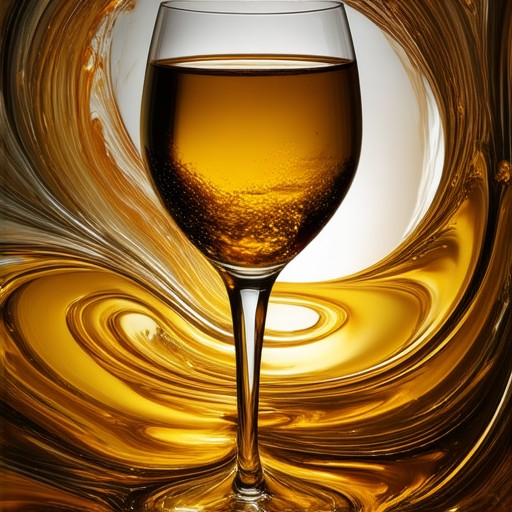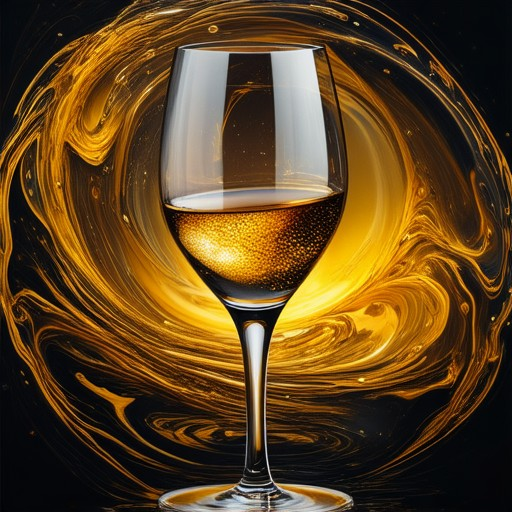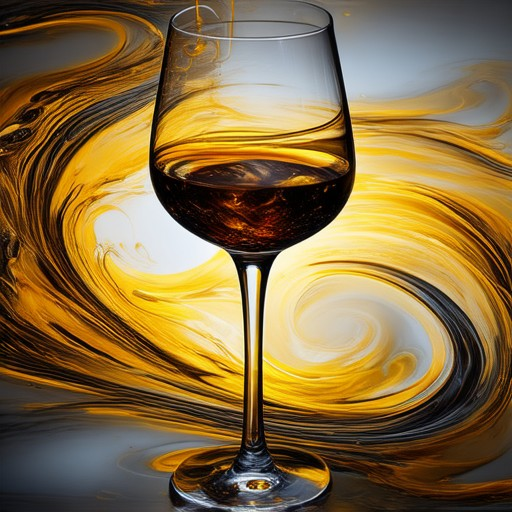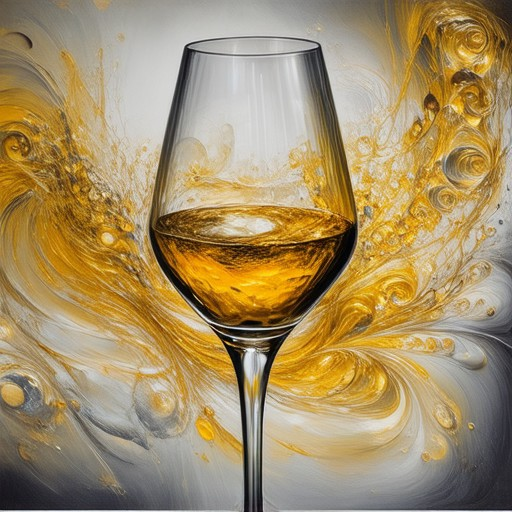Understanding the intricate nuances of wine flavor characteristics can transform your appreciation for one of the world’s most celebrated beverages. Whether you’re a seasoned wine enthusiast or new to the world of viticulture, grasping the unique qualities that define wine flavors is essential for enhancing your tasting experiences. This comprehensive guide delves into the fascinating world of wine tasting, offering insights into how flavors, aromas, and textures contribute to the overall enjoyment of wine. From identifying the distinct characteristics of red and white wines to utilizing visual aids like charts to track your tasting notes, this article equips you with the knowledge to describe wine flavors accurately and discern patterns in wine profiles. By exploring the science behind flavor perception, the impact of grape varieties, and the role of winemaking techniques, this guide provides a holistic approach to understanding wine’s complexity. Whether you’re curious about the differences between fruity and earthy notes or seeking practical tips for comparing wines, this resource offers a wealth of information to enrich your journey into the captivating realm of wine.
Key Takeaways
– Understand the primary, secondary, and tertiary wine aromas to appreciate the nuanced characteristics of different wines.
– Primary aromas are inherently from the grape variety, such as fruitiness in Chardonnay or herbaceousness in Cabernet Sauvignon.
– Secondary aromas, developed through winemaking techniques, include esters, oak influence, and funky notes from Brettanomyces.
– Tertiary aromas emerge with age, offering leather, tobacco, and dried fruit notes in refined wines.
– Master wine terminology to describe flavors like citrus, floral, and spicy notes, enhancing your ability to discern wine profiles.
– Use reference guides and taste wines side by side to build your sensory memory and identify distinct aromas.

Characteristics of Wine Taste
Wine tasting is an art form that involves detecting and appreciating the unique qualities of wine. Here are the key characteristics that define wine taste:
- Sweetness : Wines vary in sweetness based on residual sugar levels. Sweet wines include dessert wines, while dry wines have minimal sweetness.
- Acidity : Acidity gives wine its crispness and balance. High acidity can make wines feel refreshing, while low acidity may make them seem flabby.
- Tannins : Tannins are compounds that give wine structure and a velvety texture. They are often noticed in red wines but can also appear in whites, particularly those aged in oak.
- Alcohol Content : Alcohol contributes to warmth and body in wine. Higher alcohol levels can make wines feel heavier, while lower levels may result in lighter, more delicate wines.
- Body : Body refers to the weight or fullness of the wine in the mouth. Light-bodied wines are often described as delicate, while full-bodied wines are richer and more substantial.
- Aroma and Flavor : These are the sensory experiences that define a wine’s personality. Aromas can range from floral and fruity to earthy and smoky, while flavors can include citrus, dark fruit, herbs, and more.
- Mouthfeel : This encompasses the texture and sensation in the mouth. Creamy, smooth, or chalky mouthfeels are common descriptors used to describe wine textures.
Understanding these characteristics helps in appreciating the nuances of wine and distinguishing between different styles. Fine Vines offers expert wine tasting guides and insights to help enthusiasts explore these aspects further: Explore Fine Vines .
How to Describe Wine Flavor
Wine flavor is a complex and subjective experience influenced by various factors, including grape variety, terroir, winemaking techniques, and personal preference. Here’s a guide to understanding and describing wine flavors:
Key Wine Flavor Terms
- Jammy :
Wines with a jammy flavor often exhibit rich, concentrated fruit notes. This characteristic is common in red wines like Syrah, Merlot, and Cabernet Sauvignon, where the fruit ripeness leads to a velvety texture and sweet, intense flavors. - Lean :
A lean wine typically has a lighter body with pronounced acidity and less noticeable fruitiness. This is often seen in white wines like Chardonnay or Sauvignon Blanc, particularly in cooler climates. - Leathery :
Leathery wines are characterized by a sophisticated, earthy aroma and flavor. This trait is common in red wines from Bordeaux or Burgundy, where age contributes to the development of leather-like notes. - Legs :
Legs refer to the thin streams of wine that stick to the sides of the glass after swirling. While not directly a flavor descriptor, legs indicate the wine’s alcohol content and viscosity. - Citrusy :
Wines with citrusy notes exhibit tangy, zesty flavors reminiscent of lemon, lime, or orange. These characteristics are typical in dry Riesling, Grüner Veltliner, and some New World Sauvignon Blancs. - Herbal :
Herbal wines feature subtle aromatic or flavor notes from herbs like lavender, rosemary, or thyme. These can be found in both red and white wines, often as part of the terroir influence. - Smoky :
Smoky wine flavors suggest hints of charred wood, campfire, or fireplace. This is often associated with red wines aged in barrels or from regions with significant oak influence. - Spicy :
Spicy wines may have peppery or hot sensations on the palate. This is common in Syrah, Shiraz, and Zinfandel, where the spice comes from the grape’s natural characteristics. - Floral :
Floral wines have aromatic or flavor notes resembling flowers like violet, rose, or jasmine. These traits are often found in aromatic varieties like Gewürztraminer or Moscato. - Berry Fruit :
Berry fruits encompass flavors like strawberry, raspberry, or blackcurrant. These are prominent in red wines like Pinot Noir and Nebbiolo, adding complexity and freshness to the palate. - Oaky :
Oaky wines have distinct vanilla, coconut, or caramel notes from barrel aging. This is a hallmark of many New World red wines and is less common in wines from cooler climates. - Mineral :
Mineral wines have a dry, chalky, or stony mouthfeel, often reflecting the terroir’s geological features. Examples include Sancerre and Loire Valley Chenin Blanc.
Understanding Wine Flavor Profiles
Wine flavor profiles are often described using sensory analysis tools like the “Aroma Wheel” or “Taste Wheel.” These tools help identify and categorize the diverse aromas and flavors in wine. By comparing wines against these frameworks, you can better articulate their unique characteristics.
Regional Influences
- Old World Wines (Europe): Often exhibit more earthy, rustic flavors due to traditional winemaking practices and lower intervention.
- New World Wines (America, Australia, etc.): Tend to be fruit-forward with riper flavors, influenced by warmer climates and modern techniques.
Enhancing Your Wine Experience
To better describe wine flavors, practice tasting regularly and noting key attributes. Use descriptive vocabulary and consider the wine’s origin, vintage, and production methods. Over time, you’ll develop a more refined palette for recognizing and articulating wine characteristics.
For more insights into wine education and tasting, visit our wine learning resources .

What Are the 5 S’s of Wine Tasting?
The 5 S’s of wine tasting are essential steps that help you fully appreciate the nuances of a wine. These steps are:
- Sniff : Take a moment to inhale the wine’s aroma. This step allows you to identify the wine’s bouquet and nose, giving insight into its quality and character.
- Swirl : Hold the wine glass by the stem and swirl the liquid to aerate it. This motion releases trapped aromas and enhances the flavor profile.
- Sip : Take a small sip of the wine to experience its taste. Pay attention to notes of fruit, spice, or other flavors.
- Spit : If you prefer not to keep the wine or are tasting in a group setting, spit it out after sipping. This prevents the wine from becoming diluted from excessive sipping.
- Slurp : Sometimes, people take a quick sip through their nose, creating a “slurp” sound. This method can help in certain tasting techniques and is commonly practiced in some cultural contexts.
These steps, when followed in order, provide a structured approach to wine tasting, allowing you to explore the wine’s aroma, flavor, and overall character effectively.

Understanding Wine Flavor Profiles
Wine flavor profiles describe the sensory characteristics of wine, including its aroma, taste, and mouthfeel. These profiles help wine enthusiasts identify and appreciate the nuances of different wines. Here’s a breakdown of the key components:
1. Primary Taste Characteristics
Primary tastes are the initial impressions of wine, often associated with fruitiness, sweetness, sourness, bitterness, and umami (a savory taste).
- Fruity : Wines with prominent fruit flavors include Chardonnay (apple, citrus), Merlot (blackberry, plum), and Riesling (tropical fruits).
- Sweetness : Sweet wines are typically dessert wines like Sauternes or Icewine, which have high residual sugar.
- Sourness : Aged wines may develop tartness, as seen in Burgundy or Barolo.
- Bitterness : Wines with high tannins, such as Cabernet Sauvignon or Nebbiolo, can have a bitter finish.
- Umami : Earthy, mushroom-like flavors are found in wines like Pinot Noir or Loire Valley Chenin Blanc.
2. Secondary Flavors
Secondary flavors arise from aging, oxidation, and bottle age, contributing complexity and depth.
- Earthy : Notes like dirt, mold, or forest floor are common in Burgundy, Rhône Valley wines, and older vintages.
- Smoky : Smoky aromas are found in wines aged in oak barrels, such as American Oak-aged Chardonnay.
- Spicy : Pepper and clove notes are typical in Syrah, Gewürztraminer, and Viognier.
- Floral : Wines like Riesling, Moscato, and Gewürztraminer often exhibit floral aromas.
- Honeyed : Sweet, viscous notes from botrytized grapes are found in Sauternes and Dessert wines.
3. Tertiary Flavors
Tertiary flavors develop slowly through aging and are often described as complex and layered.
- Dried Fruits : Concentrated fruit flavors like raisins, figs, and apricots are found in Amarone della Valpolicella and Vintage Port.
- Truffle : Subtle truffle notes are rare but highly sought after, as seen in some Burgundy and Barbaresco wines.
- Tobacco : Smooth, leathery tobacco flavors are common in older red wines like Bordeaux and California Cabernet Sauvignon.
- Leather : Soft, supple leather notes develop in wines like Sangiovese and Zinfandel.
- Chocolate : Dark chocolate flavors are noted in wines like Carmenère and Malbec.
4. Balance and Harmony
A well-balanced wine integrates primary, secondary, and tertiary flavors seamlessly, creating harmony. Regions known for balanced wines include Napa Valley for rich reds, Burgundy for elegant whites, and the Loire Valley for diverse profiles.
By understanding these flavor profiles, wine enthusiasts can better appreciate the unique characteristics of different wines and pair them effectively with food.
How to Distinguish Wine Flavors
Understanding and distinguishing wine flavors is a skill that takes practice and awareness of the subtle nuances that make each wine unique. Here’s a comprehensive guide to help you identify and appreciate different wine profiles:
The Five Key Aspects of Wine Flavor
- Nose: The aroma is often the most revealing aspect of a wine’s character. Swirl the wine gently in the glass to release its bouquet. Common scents include fruity, floral, herbal, or spicy notes. Pay attention to the intensity and complexity of these smells.
- Palate: When you take your first sip, focus on the initial impression. Notice if the wine feels light, medium, or full-bodied. Identify any primary flavors like citrus, berries, or earthy tones. Also, pay attention to secondary flavors such as oak, butter, or vanilla, which develop during aging.
- Acidity: The wine’s freshness or liveliness is influenced by acidity. A balanced acidity enhances other flavors, while an excess can make the wine feel sharp or acidic. A well-structured acidity complements foods nicely.
- Body: The weight or texture of the wine can be described as light, medium, or heavy. This is influenced by factors like alcohol content, grape variety, and winemaking techniques. A lighter body may feel more refreshing, while a heavier body may feel more warming.
- Finish: The lingering sensation after a sip is known as the finish. It can range from crisp and clean to long and elegant. A smooth finish suggests well-integrated flavors, while a short finish may indicate younger wines that need more time to develop.
Practical Tips for Identifying Wine Flavors
- Start with What You Know: Compare unknown wines to ones you already recognize. For example, if you know a Chardonnay typically has apple and citrus notes, look for similar characteristics in an unfamiliar white wine.
- Use a Reference Guide: Many wine apps and websites provide flavor profiles for popular grapes and regions. Fine Vines offers detailed guides that can help you understand the typical characteristics of different wines.
- Sample Side by Side: Taste wines alongside each other to see how their flavors and aromas differ. This helps you build a mental database of what certain profiles taste and smell like.
- Pair Wines with Foods: Practice by pairing wines with foods you know. This can help you associate certain flavors with specific dishes, making it easier to identify them in different contexts.
Step-by-Step Guide to Tasting Wine
- Look: Examine the wine’s color and clarity. Young wines are often more vibrant, while older wines may appear more muted.
- Smell: Hold the glass and swirl the wine to release its aroma. Take a deep sniff and try to identify any fruit, flower, spice, or other scent notes.
- Taste: Sip slowly and swipe your tongue across the inside of the glass to coat it with wine. This helps carry the flavors to the front of your palate.
- Swallow or Spit: After tasting, decide whether to swallow or spit the wine. Spitting allows you to keep tasting without overwhelming your palette.
The Sommelier’s Top Tips
- Be Patient: Don’t rush the process. Give each wine time to reveal its true character.
- Stay Curious: Ask questions and seek advice from experienced sommeliers or wine enthusiasts. Learning from others can accelerate your progress.
- Practice Regularly: Taste a variety of wines regularly to build your sensory memory and understanding of different flavor profiles.
- Use Fine Vines Resources: Explore our wine tasting guides and grape variety profiles to deepen your knowledge and improve your skills.
Expanding Your Vocabulary
Mastering wine terminology will greatly enhance your ability to describe and distinguish flavors. Here are some common descriptors to get started:
- Citrus, Tropical, Berries, Earthy, Floral, Spicy, Herbal, Oaky, Buttery, Vanilla, Fresh, Rich, Balanced, Unbalanced, Smooth, Crisp
For example, a Sauvignon Blanc might exhibit citrus and herbal notes on the nose, while a Cabernet Sauvignon could show blackberry and cedar on the palate.
Final Thoughts
Distinguishing wine flavors is a rewarding journey that improves with practice. By paying attention to aroma, taste, and texture, along with understanding grape varieties and winemaking techniques, you’ll become a more confident and knowledgeable wine enthusiast. Remember, the goal is to enjoy the experience and connect with the wine on a deeper level.
Explore more resources on Fine Vines to discover expert insights and tips for perfecting your wine tasting skills.

What Are the Three Primary Groups of Wine Flavor?
The three primary groups of wine flavor are primary, secondary, and tertiary aromas. Each group contributes uniquely to the overall flavor profile of a wine, and understanding them can greatly enhance your appreciation of wine.
1. Primary Aromas
Primary aromas are derived directly from the grape variety and its terroir. These are the initial and most prominent flavors that define the wine’s character. Examples include:
- Fruitiness : Berries, citrus, or tropical fruits depending on the grape type.
- Herbaceous Notes : Green bell peppers, herbs, or grassy undertones.
- Floral Notes : Roses, lavender, or other floral scents.
These aromas are inherent to the grape and cannot be altered significantly during winemaking.
2. Secondary Aromas
Secondary aromas develop during the winemaking process and are influenced by fermentation, aging, and blending. They complement the primary aromas and often add complexity to the wine. Examples include:
- Esters : Spicy, peppery, or clove-like notes resulting from yeast activity.
- Oak Influence : Vanilla, coconut, or cedar notes from barrel aging.
- Funkiness : Brettanomyces or other wild yeast-derived aromas.
Winemakers use techniques like oak aging, lees stirring, and blending to enhance these secondary characteristics.
3. Tertiary Aromas
Tertiary aromas emerge with age and are typically associated with fine wines. They evolve over time and add depth and sophistication to the wine. Examples include:
- Aging Signs : Leather, tobacco, or earthy tones indicating bottle age.
- Complexity : Layers of aroma that unfold as the wine develops.
- Dried Fruit : Ripe apricots, figs, or dates that develop with time.
Wines with tertiary aromas are often cellared to allow these flavors to mature and integrate seamlessly with the primary and secondary notes.
By understanding these three groups of wine flavor, you can better appreciate the nuances of a wine and enjoy its unique profile.



0 Comments